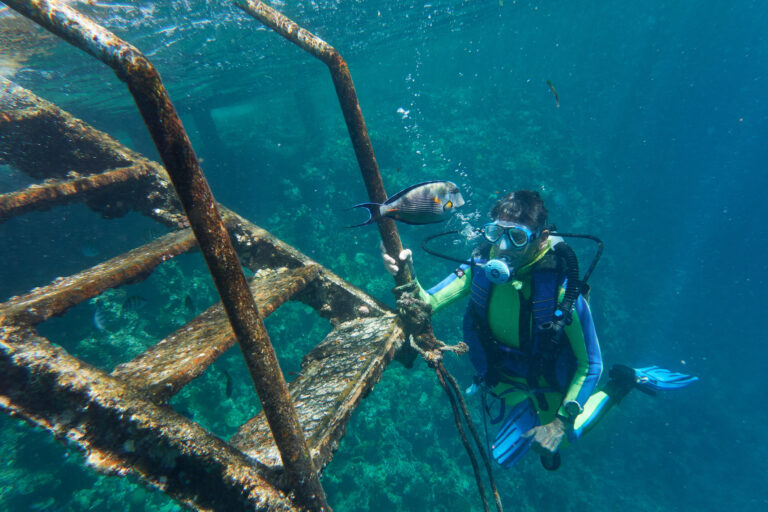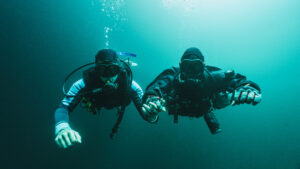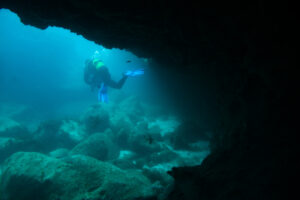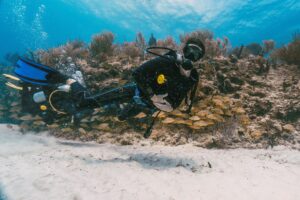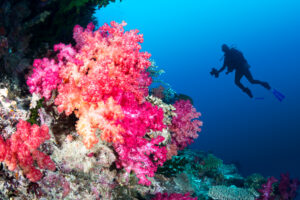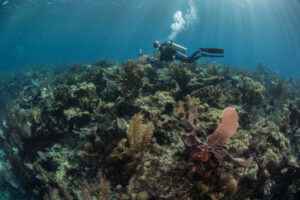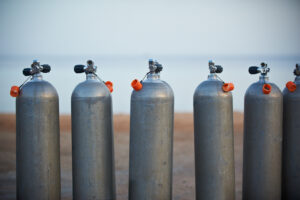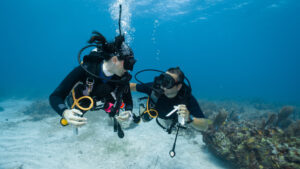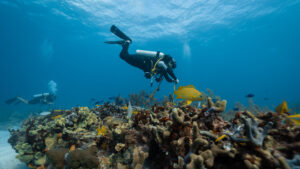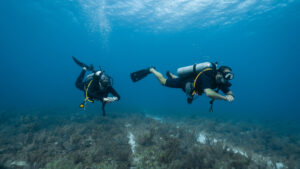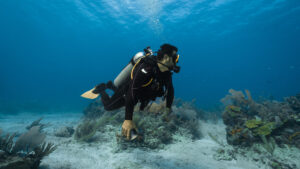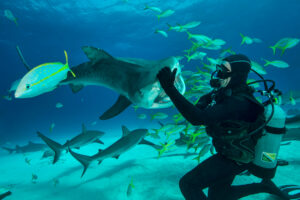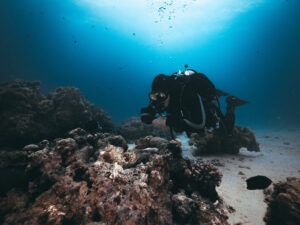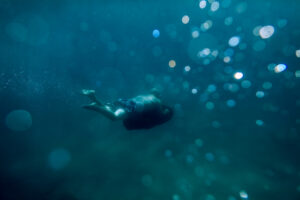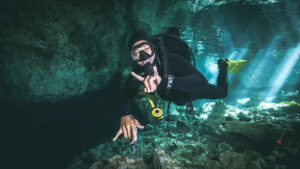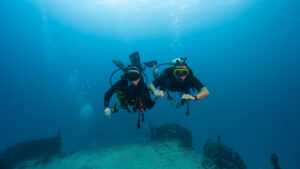What is a Liveaboard?
A liveaboard is a vessel designed or adapted for extended voyages, providing accommodations for divers who wish to stay on board for several days or weeks. This setup allows enthusiasts to access remote diving sites, experience multiple dives each day, and immerse themselves in the underwater environment without the need to return to shore frequently. Liveaboards have become increasingly popular among divers for their convenience and the enriched diving experience they offer.
Historical Development
The concept of the liveaboard dates back to the early days of scuba diving when enthusiasts sought ways to explore remote underwater locations without the constraints of returning to land each day. Initially, these expeditions were conducted using basic boats or repurposed fishing vessels, equipped with minimal amenities and limited space. These early ventures laid the groundwork for the modern liveaboard experience, which has evolved significantly over the decades.
In the 1970s and 1980s, as scuba diving gained popularity worldwide, the demand for more sophisticated liveaboard options grew. This period saw the conversion of larger vessels into dedicated diving platforms, offering improved accommodations and facilities. Technological advancements in navigation and diving equipment also played a crucial role in this evolution, making extended offshore trips safer and more accessible.
By the 1990s, the liveaboard industry had become well-established, with specialized operators offering trips to some of the most renowned diving destinations across the globe. This era marked a significant transformation in the quality of service and the range of amenities available on board. Modern liveaboards are often equipped with luxurious cabins, gourmet dining, and state-of-the-art diving facilities, catering to a diverse clientele, from novice divers to seasoned professionals.
Types of Liveaboards
Liveaboards come in various shapes and sizes, each tailored to different preferences and budgets. Luxury yachts represent the high end of the spectrum, offering spacious cabins, fine dining, and premium services. These vessels often feature amenities such as spas, sun decks, and even mini-submarines for underwater exploration. They cater to divers seeking a high level of comfort and an exclusive experience.
On the other end, there are budget-friendly liveaboards, which provide a more basic but still fulfilling experience. These vessels are usually converted fishing boats or smaller yachts with simpler accommodations and fewer amenities. Despite the lack of luxury, they offer an excellent way to access remote diving sites and enjoy multiple dives each day without breaking the bank.
In between these extremes, there are mid-range liveaboards that strike a balance between comfort and cost. These vessels typically feature comfortable cabins, decent dining options, and adequate facilities for diving. They are popular among divers who seek a reasonable level of comfort and convenience without the extravagance of a luxury yacht.
Geographically, liveaboard configurations can vary significantly. In the Caribbean, for instance, you might find sleek, modern yachts designed for warm, calm waters. In contrast, the rugged liveaboards operating in the colder waters of the North Atlantic or the Pacific may be sturdier and more utilitarian, built to withstand harsher conditions. This diversity in liveaboard types ensures that there is a suitable option for every diver, regardless of their preferences or destination.
Liveaboard Destinations
Liveaboard diving offers access to some of the most breathtaking and remote underwater sites around the globe. The Great Barrier Reef in Australia is one of the most iconic destinations, renowned for its vibrant coral reefs and diverse marine life. Liveaboards here allow divers to explore parts of the reef that are unreachable by day trips, offering a more intimate and uninterrupted experience.
The Red Sea is another premier liveaboard destination, attracting divers with its crystal-clear waters, dramatic drop-offs, and historical shipwrecks. Egypt’s Red Sea coast, in particular, is dotted with liveaboard operators offering trips to sites like Ras Mohammed and the Brothers Islands, which are teeming with marine biodiversity.
In the Pacific, the Galápagos Islands are a must-visit for any serious diver. The archipelago’s remote location and unique ecosystem provide opportunities to encounter species found nowhere else on Earth, such as the marine iguana and the Galápagos shark. Liveaboards in this region often include land excursions, allowing divers to experience the islands’ unique terrestrial wildlife as well.
Southeast Asia, with its rich marine biodiversity and relatively warm waters, is another hotspot for liveaboard diving. Destinations like Raja Ampat in Indonesia and the Similan Islands in Thailand offer spectacular coral reefs and abundant marine life, including manta rays, whale sharks, and countless fish species. These areas are often best explored via liveaboard due to the vast distances between dive sites.
Each of these destinations has its own peak season, influenced by factors such as weather patterns and marine life migrations. For instance, the best time to visit the Great Barrier Reef is typically between June and October, while the optimal months for diving in the Red Sea are from March to May and September to November. Understanding these seasonal variations is crucial for planning a successful liveaboard trip.
Life on a Liveaboard
Life on a liveaboard is a unique and immersive experience, centered around diving and marine exploration. The daily routine typically begins early, with the first dive often scheduled at dawn. Divers wake up to a briefing from the dive master, who provides details about the dive site, expected marine life, and safety procedures. After the briefing, divers gear up and enter the water directly from the boat, often accessing dive sites that are unreachable by day boats.
Meals on a liveaboard are usually communal, fostering a sense of camaraderie among guests. Breakfast, lunch, and dinner are served in a dining area, and the food is often prepared by an onboard chef, offering a range of dishes to suit various tastes and dietary needs. Snacks and refreshments are typically available throughout the day, ensuring that divers stay energized for their underwater adventures.
Between dives, guests have the opportunity to relax and enjoy the amenities on board. This might include lounging on the sun deck, reading in the indoor lounge, or even getting a massage on some of the more luxurious vessels. The time between dives is also used for logging dive details, reviewing underwater photographs, and discussing the day’s experiences with fellow divers.
Evenings on a liveaboard are often spent socializing and participating in organized activities such as movie nights, marine life presentations, or stargazing sessions. The atmosphere is generally relaxed and convivial, allowing divers to share their passion for the underwater world and build lasting friendships.
Safety is a top priority on liveaboards, with strict protocols in place to ensure the well-being of all guests. This includes regular safety drills, well-maintained equipment, and the presence of experienced dive masters and crew members. Medical facilities on board are usually basic but sufficient for handling common diving-related issues, and emergency evacuation plans are always in place for more serious situations.
Planning and Preparation
Planning a liveaboard trip requires careful consideration and preparation to ensure a smooth and enjoyable experience. The first step is selecting a destination and a vessel that aligns with your diving interests, experience level, and budget. Researching different liveaboard operators, reading reviews, and seeking recommendations from fellow divers can help in making an informed decision.
Packing for a liveaboard trip involves more than just diving gear. Essentials include a wetsuit suitable for the water temperatures of your destination, a dive computer, and an underwater camera if you wish to document your dives. Personal items such as sunscreen, swimwear, and casual clothing for lounging on the boat are also important. Additionally, bringing your own toiletries and any necessary medications is crucial, as access to these items may be limited once on board.
Travel insurance is a vital consideration for any liveaboard trip, offering protection against unforeseen circumstances such as trip cancellations, medical emergencies, or lost luggage. It’s important to ensure that your insurance policy covers scuba diving and includes provisions for emergency evacuation from remote locations.
Medical fitness is another key aspect of preparation. Diving requires a certain level of physical health and stamina, and it’s advisable to undergo a medical check-up before your trip. Some liveaboard operators may require a medical certificate confirming your fitness to dive, especially if you have pre-existing health conditions.
Booking your liveaboard trip well in advance is recommended, particularly for popular destinations and peak seasons. This ensures that you secure a spot on your preferred vessel and allows ample time to arrange travel logistics, such as flights and accommodations before and after your liveaboard adventure.
Advantages and Challenges
Liveaboard diving offers numerous advantages that enhance the overall experience for scuba enthusiasts. One of the most significant benefits is the ability to access remote and less crowded dive sites. Liveaboards can venture far from shore, reaching locations that are beyond the range of day boats. This often translates to healthier coral reefs, abundant marine life, and the opportunity to discover hidden gems that few others have explored.
Another advantage is the frequency and variety of dives. Liveaboards typically offer multiple dives per day, including early morning, afternoon, and night dives. This allows divers to experience different underwater environments and observe marine life during various times of the day, providing a more comprehensive and enriching experience.
The convenience of staying on a liveaboard cannot be overstated. With all meals, accommodations, and diving logistics taken care of, divers can focus entirely on their underwater activities and relaxation. The close-knit environment fosters a sense of community, where divers can share their experiences, learn from each other, and form lasting friendships.
However, liveaboard diving also comes with its challenges. The cost can be prohibitive for some, as these trips tend to be more expensive than land-based diving vacations. The price reflects the comprehensive nature of the experience, including accommodation, meals, and multiple dives each day. Careful budgeting and planning are essential to manage the expenses.
Living in close quarters with other guests can also be challenging for some individuals. Space on a liveaboard is limited, and privacy can be minimal. Adjusting to the confined environment and maintaining a harmonious relationship with fellow divers is crucial for a pleasant experience. Seasickness is another potential issue, especially for those prone to motion sickness. It’s advisable to bring medication and take preventive measures to mitigate this discomfort.
Finally, the intensive nature of liveaboard diving can be physically demanding. Multiple dives each day, often in challenging conditions, require a good level of fitness and stamina. Divers must be prepared for the physical exertion and ensure they are well-rested and hydrated throughout the trip.
Key Takeaways
Liveaboard diving offers an unparalleled opportunity to explore remote and diverse underwater environments, providing convenience, camaraderie, and an intensive diving experience. With careful planning and preparation, divers can fully enjoy the numerous benefits while effectively managing the challenges. Whether opting for a luxurious yacht or a budget-friendly vessel, liveaboard trips are a valuable addition to any diver’s journey, promoting deeper connections with the ocean and its inhabitants.

